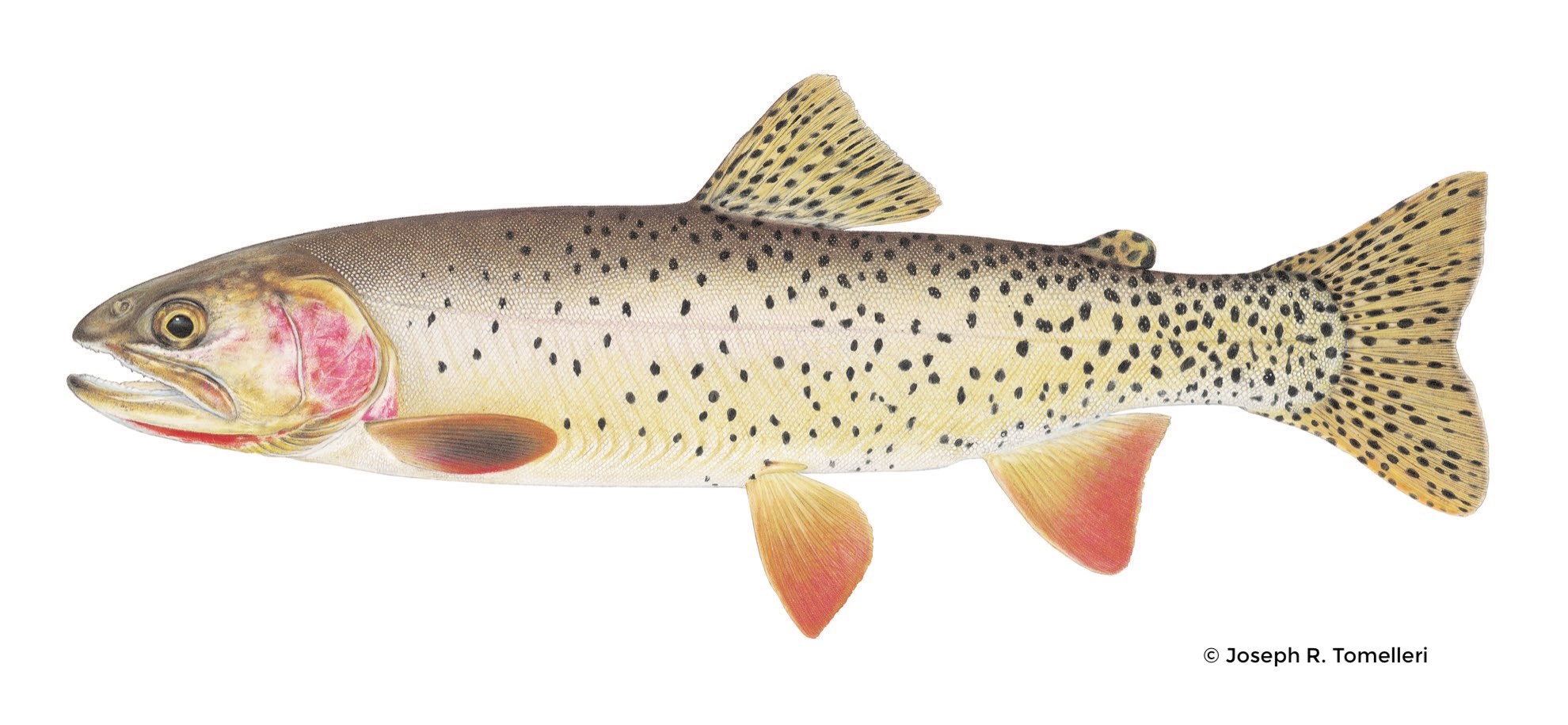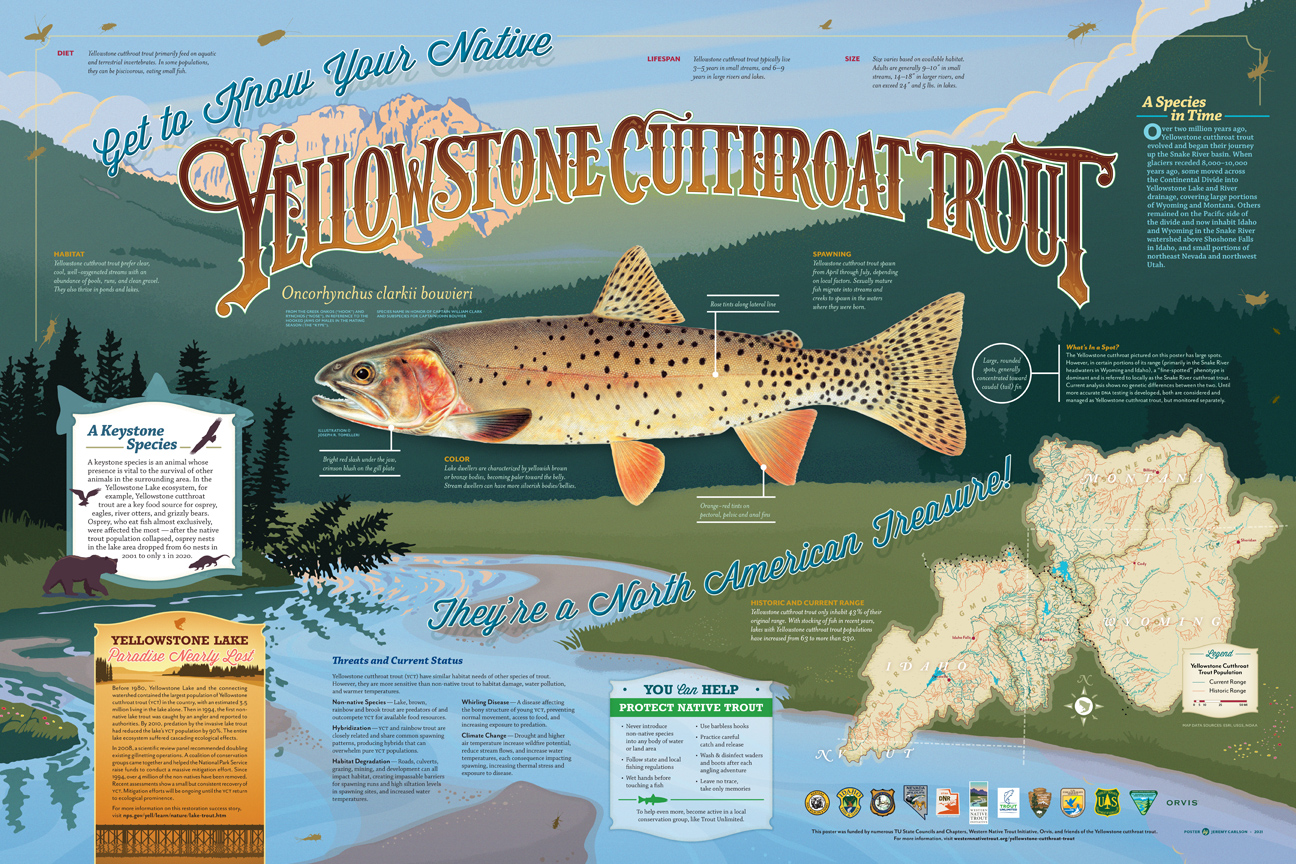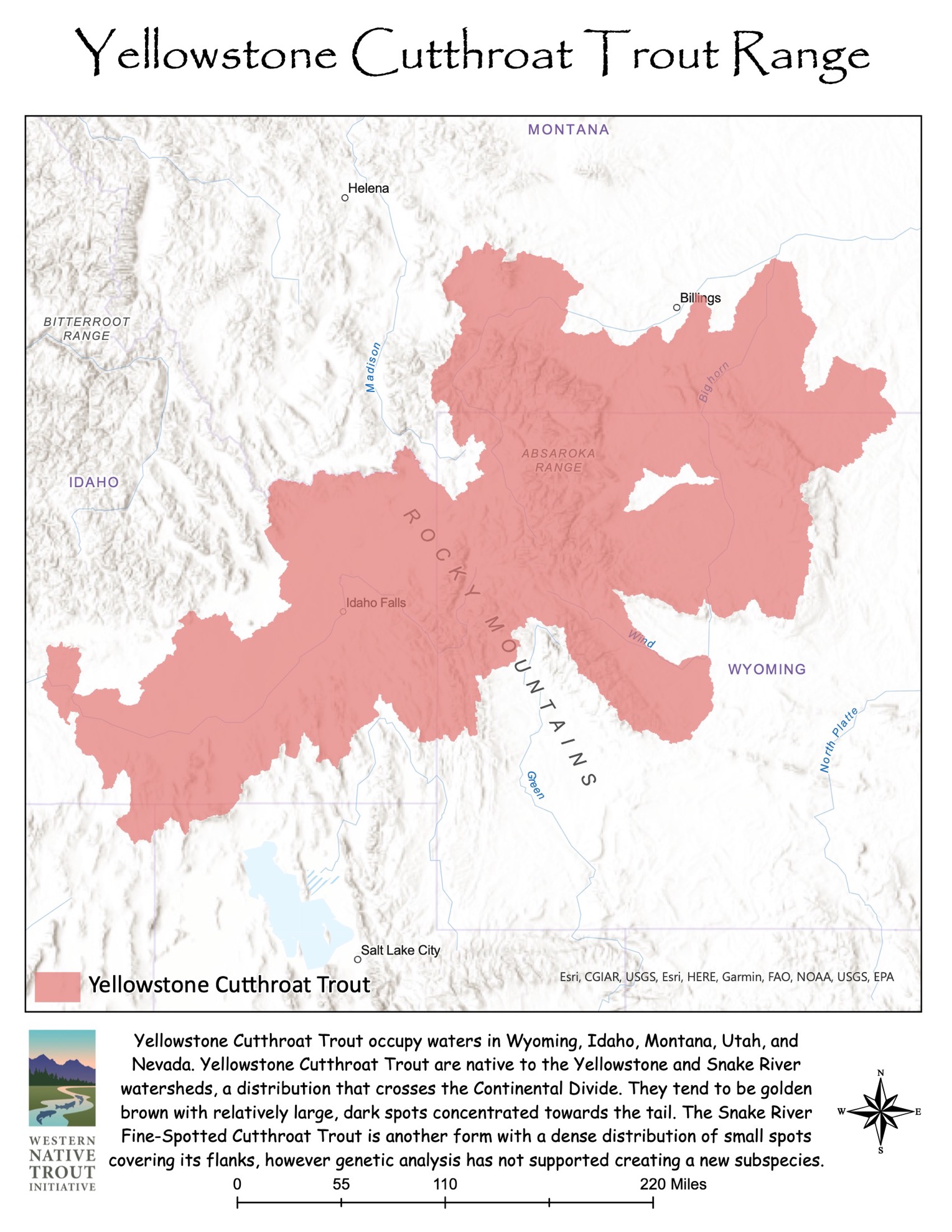
Yellowstone Cutthroat Trout (Oncorhynchus clarkii bouvieri) is one among a diversity of trout native to the western United States. They occupy waters in Wyoming, Idaho, Montana, Utah, and Nevada. Like all cutthroat trout, Yellowstone Cutthroat Trout sport a red slash along their jawline. They tend to be golden brown with relatively large, dark spots concentrated towards the tail. The Fine-Spotted Cutthroat Trout is another form of Yellowstone Cutthroat Trout, and as the name suggests, a dense distribution of small spots covers its flanks. This stunning fish lives alongside Yellowstone Cutthroat Trout in the Snake River drainage. The potential for the Fine-Spotted Cutthroat Trout to be a separate subspecies has been the subject of speculation; however, genetic analyses do not support this idea. The fine-spotted form is considered a Yellowstone Cutthroat Trout in management; however, the status of this form is monitored separately. Yellowstone Cutthroat Trout are native to the Yellowstone and Snake River watersheds, a distribution that crosses the Continental Divide. Historically, or pre-European settlement, Yellowstone Cutthroat Trout were present in an estimated 17,800 miles of stream. This distribution included large parts of Wyoming, Montana, Idaho, with a few streams supporting Yellowstone Cutthroat Trout extending into small portions of Utah and Nevada. Yellowstone Lake, at 90,000 acres, was by far the largest lake available to Yellowstone Cutthroat Trout. Occupied lake habitat was otherwise limited, with 61 lakes providing a cumulative 35,700 acres of lake. Compared to the historical distribution, the current distribution of Yellowstone Cutthroat Trout is a substantial reduction of occupied stream habitat, but the amount of occupied lake habitat has increased markedly. Stream habitat decreased from about 17,800 miles to 7,500 miles, meaning Yellowstone Cutthroat Trout occupy 43% of their historical stream habitat. Stocking mountain lakes for recreation has expanded the number of occupied lakes supporting Yellowstone Cutthroat Trout from 61 to more than 230.
Yellowstone Cutthroat Trout can be distinguished from other cutthroat trout by their larger black spots, clustered toward the tail, and by their gray, gold, and copper hues. The Yellowstone Cutthroat measures from 6 to 20 inches long when it reaches maturity.
Between 2007 and 2021, the Western Native Trout Initiative provided $703,046 in funding to 29 projects to benefit Yellowstone Cutthroat Trout. Projects have included barrier construction and restoration, habitat restoration, fish passage, telemetry studies, and public outreach and education. In 2021, WNTI collaborated with other partners to fund a rangewide genetic assessment of Yellowstone Cutthroat Trout to direct management and conservation strategies to enhance population and species persistence in what is believed to be the largest project of this type ever undertaken for an inland fish species.


Additional Resources
- VIEW a Storymap about Yellowstone Cutthroat Trout created by Montana Fish Wildlife and Parks.
- READ the 2016 Range-Wide Status Assessment for Yellowstone Cutthroat Trout.
- READ about Montana Fish Wildlife and Parks’ Yellowstone Cutthroat Trout conservation.
- READ about Idaho Fish and Game Department’s Yellowstone Cutthroat Trout conservation.
- READ about Wyoming Game and Fish Department’s Yellowstone Cutthroat Trout conservation.
- READ about Utah Division of Wildlife Resource’s Yellowstone Cutthroat Trout conservation.
Videos
- WATCH a 2013 video from Idaho Game and Fish Department about Yellowstone Cutthroat Trout in the South Fork of the Snake River
- WATCH a brief video from Friends of the Teton River releasing a Yellowstone Cutthroat Trout in Bitch Creek.
- WATCH “The Return“, a film about Trout Unlimited’s efforts to support Yellowstone National Park’s recovery of the Yellowstone cutthroat trout in Yellowstone Lake. The film documents both the return of YCT’s to the upper Yellowstone River system and the return of a father (Dave Sweet) and his daughter, Diana, to that area to experience the cutthroat recovery from near extirpation.
